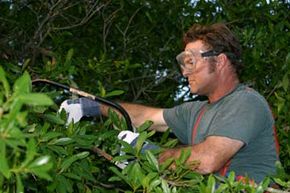Cats, squirrels and kids are all notorious tree climbers, but when it comes to children, the urge to scramble up woody summits tends to die out as they grow older. But a growing trend known as recreational (or technical) tree climbing is changing that. Arborists see a lot more company up in the canopies these days, as outdoor enthusiasts return to their childhood roots (or the opposite, as it were) and enjoy a thrilling activity that helps make the cares of the world fall away.
Many people report feeling a sense of calm as they linger at the rooftop of the forest, removed from the demanding pull of daily life far below, and the experience leaves them enlivened and invigorated. Tree climbing is also good exercise, and once you have the basic gear, it's a lot cheaper than going to the gym. Although not every tree is ideal for climbing, many are perfect for the activity.
Advertisement
Before we jump into the fun, however, let's discuss some of the professional reasons people climb trees. Arborists, or tree-care specialists, perform a wide range of tree-related tasks such as pruning and removing dead branches, diagnosing diseases and insect infestations, supervising tree plantings, overseeing general tree health, advising in matters of tree safety and of course, planning some great Arbor Day festivities.
Other professionals you might spot up in trees include utility workers clearing away branches from power lines, scientific researchers studying certain ecosystems or wildlife and botanical surveyors tallying plant and animal populations. Of course the occasional hunter, environmental activist or nature photographer can also be found poking around the treetops, too. But rookie tree aficionados don't need an excuse to fit in a little recreational tree climbing, their motives can be as simple as wanting to spend some time outdoors and feel closer to nature.
Over the next few pages we'll cover several aspects of recreational tree climbing, including the proper training, the basic gear and the best bets for safety.
Advertisement




